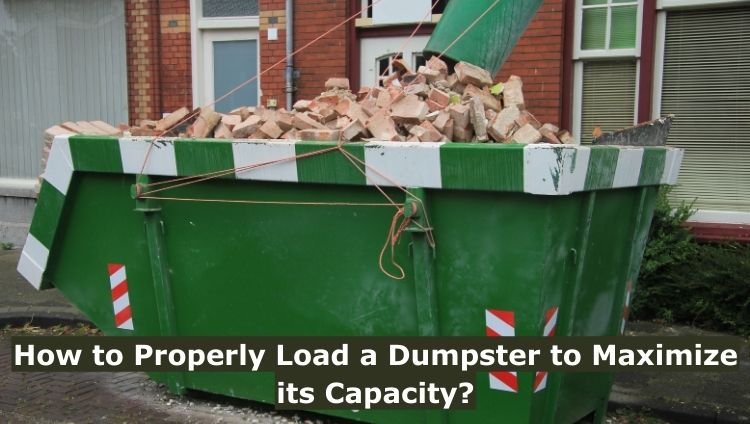Properly loading a dumpster is essential for efficient waste disposal and cost savings.
Whether you’re undertaking a home renovation, cleaning out your garage, or managing a construction site, properly load a dumpster to maximize its capacity can help reduce the number of pickups required and minimize overall disposal costs.
In this comprehensive guide, we will provide detailed step-by-step instructions on How to properly load a dumpster to maximize its capacity? and offer additional tips for a smoother waste management process.
Choose the Right Size Dumpster:
Selecting the appropriate dumpster size for your project is the foundation of efficient waste management.
Dumpster sizes typically range from 10 to 40 cubic yards. It’s crucial to assess the volume and types of waste you’ll generate.
Consulting with your dumpster rental company is essential to ensure you choose the right size for your specific needs.
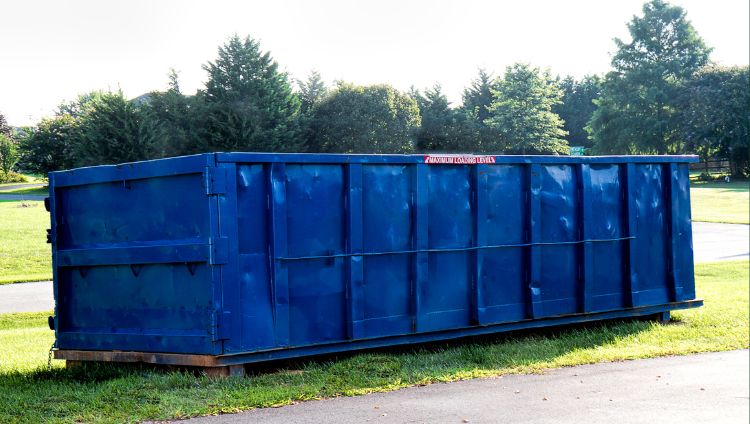
Sort and Separate Waste
Before you begin loading the dumpster, take a moment to sort your waste into different categories.
This approach not only makes the loading process easier but also allows you to use the space more efficiently. Common waste categories include:
Recyclables
Materials such as cardboard, paper, glass, metals, and plastics should be sorted from regular waste for recycling. Make sure these items are clean and dry to prevent contamination.
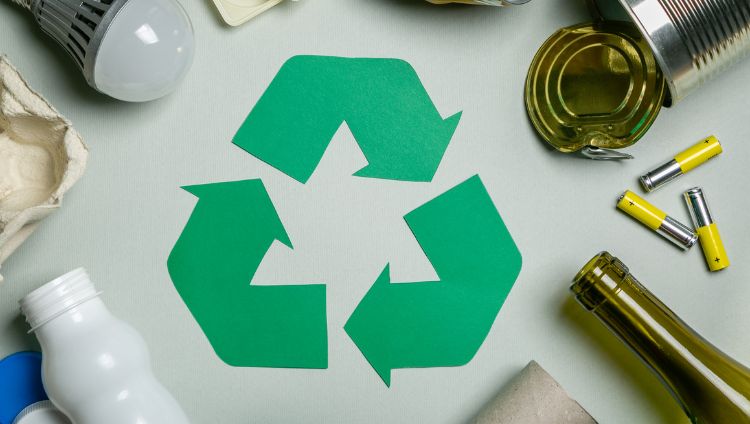
Hazardous Materials
General Waste
This category encompasses everyday household or construction waste, such as furniture, drywall, insulation, and packaging materials.
Break Down Large Items:
To optimize the use of your dumpster’s space, consider disassembling or breaking down large items before placing them inside. For instance:
Furniture
Remove legs or arms from chairs and tables, and disassemble larger pieces like sofas whenever possible.
Appliances
Take doors off refrigerators, ovens, or dishwashers to make them more compact.
Construction Materials
Cut long boards, pipes, or other construction materials into manageable lengths. By breaking down these items, you can significantly reduce their volume and make the most of your dumpster’s capacity.
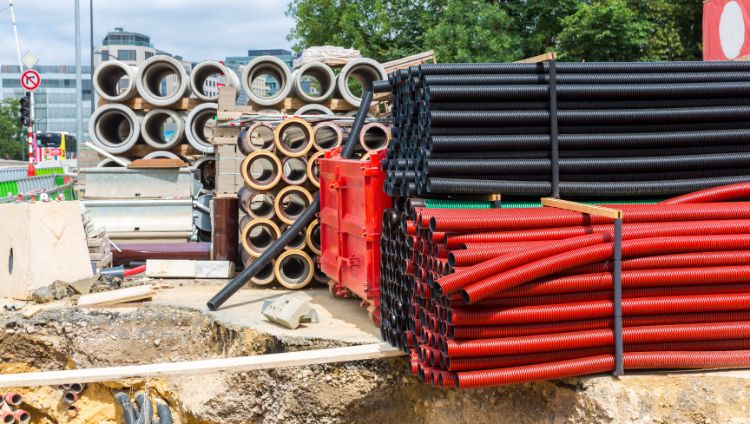
Fill the Dumpster Strategically
When loading the dumpster, follow these advanced guidelines:
Start with Flat and Heavy Items
Start by placing flat and weighty objects like plywood, bricks, or concrete at the bottom of the dumpster. These objects establish a sturdy foundation for the remainder of your trash and aid in distributing weight uniformly.
Layer Effectively
Alternate between layers of heavy and bulky items and lighter materials. This layering technique prevents uneven distribution of weight and ensures that the dumpster is filled evenly.
Fill Gaps
As you load the dumpster, be vigilant about filling any gaps and voids to avoid wasted space. Smaller items and debris can be used to fill these gaps effectively.
Compact as You Go
If possible, use a compactor to compress waste periodically. This reduces air gaps and increases the overall capacity of the dumpster.
Avoid Overloading
It’s crucial not to exceed the dumpster’s weight limit or fill it above the rim, as this can lead to safety hazards and additional fees.
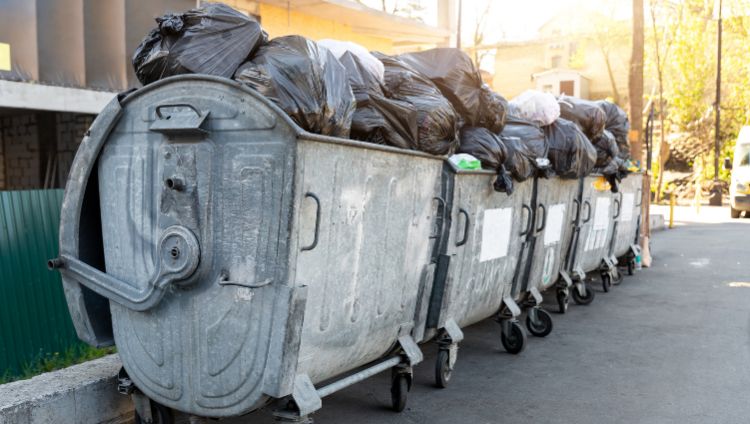
Recycle When Possible:
To reduce waste and make the most of your dumpster space, separate recyclable items such as cardboard, glass, metal, and plastics.
Lots of dumpster rental companies provide recycling services. Use this opportunity to cut down on trash sent to landfills and save money on getting rid of waste.
Schedule Pickup Wisely:
Plan the pickup schedule with your dumpster rental company to ensure you’re not paying for unnecessary hauling.
Arrange for pickups when the dumpster is full but not overflowing, and coordinate with the rental company for timely removal.
Related Post: How to Schedule a Dumpster Rental Online?
Additional Tips for Smooth Dumpster Loading:
To prevent rain from soaking the contents of your dumpster, especially in bad weather, cover it with tarps or use lids. Wet waste can increase in weight and become harder to handle.
Avoid placing materials like dirt, concrete, or asphalt in the dumpster unless it’s specifically intended for heavy-duty loads, as separate containers may be necessary for these items.
Maintain regular communication with your dumpster rental provider to inform them of any scheduling adjustments or unexpected surges in waste volume. Staying proactive helps ensure a seamless waste management process.
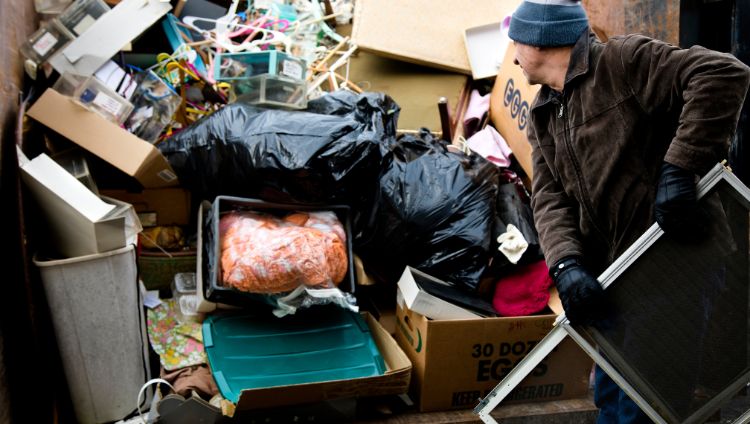
Frequently Asked Questions
What’s the first step in maximizing dumpster capacity?
The first step is choosing the right dumpster size for your project. Assess the volume and types of waste you’ll generate, and consult with your dumpster rental company to select an appropriate size.
What materials should be separated for recycling?
Common recyclables include cardboard, paper, glass, metals, and plastics. Ensure that these materials are clean and dry to avoid contamination.
How can I break down large items effectively?
Disassemble or break down large items like furniture, appliances, and construction materials whenever possible. This reduces their volume and makes efficient use of your dumpster space.
Should I compact the waste as I load the dumpster?
Yes, compacting waste periodically can help reduce air gaps and maximize capacity. Use a compactor if available, or manually press down on the waste to compress it.
What should I do if I encounter hazardous materials?
Identify hazardous waste items, such as chemicals, paints, or electronics, and follow local regulations and disposal guidelines. Contact hazardous waste disposal facilities for proper handling.
Can I overload the dumpster to fit more waste?
No, overloading a dumpster is unsafe and can result in additional fees. It’s important not to exceed the dumpster’s weight limit or fill it above the rim.
How do I prevent waste from getting wet in the dumpster?
Use tarps or covers to protect the dumpster contents from rain, especially if wet waste becomes heavier and harder to handle.
Conclusion:
Maximizing the efficiency of your dumpster usage can positively impact both the environment and your expenses.
Selecting the appropriate size, sorting waste, breaking down bulky items, loading strategically, and emphasizing recycling can help you make the most of your dumpster’s capacity while reducing disposal costs.
Efficiently loading items not only supports your project’s success but also promotes environmental responsibility. By adopting these simple practices and a few additional tips, you can streamline your waste management process.


